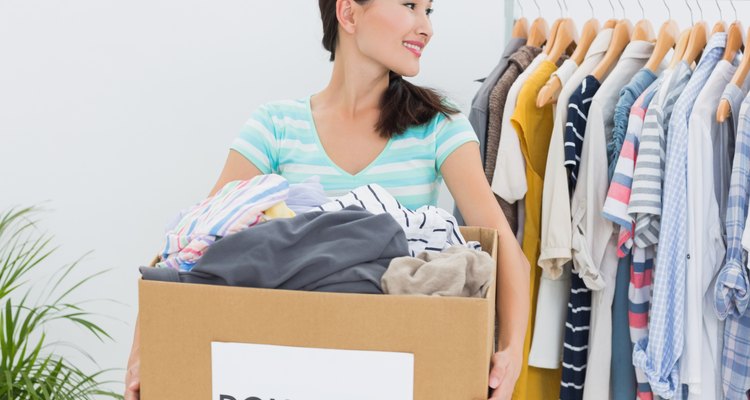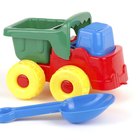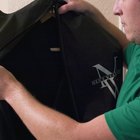
Wavebreakmedia Ltd/Wavebreak Media/Getty Images
Setting up a clothing drive may seem overwhelming when you first get the idea, but the process is fairly straightforward. Find and touch base with an organization willing to receive the clothes before making arrangements to collect donations; doing so ensures that the collected goods will be accepted and also lets potential donors know who will benefit from their donations.
Finding Recipients
Search for local organizations willing to receive your donations -- keeping it local eliminates shipping costs or logistic issues while helping people close to home. Call local homeless shelters, transitional-housing shelters, social-service organizations or faith-based organizations, asking each if they would be open to receiving such donations. Any of these organizations will also point you in the right direction even if they cannot accept your donated goods. Ask potential recipient organizations what types of items are most needed -- in the winter, coats, hats and gloves may seem obvious, while there may be a great need for socks -- a typically forgotten type of donation -- any time of year.
Focus on Specific Clothing Items
Once you've found a recipient organization, decide which types of clothing items to collect. If the recipients are women and young children, for instance, you don't have to collect men's shoes. Narrow the collected items down to several items, such as cold-weather outerwear or clothing for school-age children. Create flyers and signs spelling out exactly what is needed and whom the goods will benefit, as well as when the drive ends so those seeing your flyers or signs can plan accordingly. Explain in a prominent location that only new and like-new, clean clothing is acceptable.
Preparing for Collection
Ask the managers or owners of local businesses if they will allow a bin or box for your clothing drive. Tell them how long you plan to leave the box and exchange phone numbers in case the box fills up faster than expected. Local coffee shops, department stores and clothing retailers are some of the businesses that may accept your proposal. If you are active in a social or faith-based organization, the additional support from group members helps ensure a successful drive. Ask store owners or managers for large boxes to use for the drive; some may provide their own large bins for collection purposes.
Collecting and Distributing the Goods
Check in with the various collection-bin locations every few days, collecting the goods as needed. If the drive goes better than expected, you may need help boxing and transporting the materials. If you plan to donate all the collected items on one specific day, you may need a place to store collected clothing until the donation date arrives. Sort through the items, if possible, before donating the goods to ensure all items are in good, usable condition. Call the recipient organization in advance to ensure they have staff on hand to help receive the goods, if you're donating a large quantity of clothing. In some cases, you may be able to help hand out the goods if you would like the experience.
Related Articles

How to Donate Clothing to Refugees

How to Donate Barbies

How to Plan a Donation Drive for a ...

How to Get Donations for a Fashion Show

Ideas on How to Organize a Fun Day for ...

How to Organize a Charity Fashion Show

How do I Get Free Clothing Racks?

How to Remove the Perfume Smell From ...

Community Outreach Ideas

How to Dispose of Army Uniforms
What Is Consignment?

Who Gives Donated Vehicles to the Poor?

How to Plan a Community Beautification ...

How to Store Clothes in Cardboard Boxes

How to Donate Old Prescription ...

Household Inventory Checklist for a ...

California Moving Checklist

How to Store Clothes in Storage

How to Critique an Event

How to Hold a Penny War Fundraiser
References
Resources
Writer Bio
Kathy Adams is an award-winning journalist. She is an avid DIYer that is equally at home repurposing random objects into new, useful creations as she is at supporting community gardening efforts and writing about healthy alternatives to household chemicals. She's written numerous DIY articles for paint and decor companies, as well as for Black + Decker, Hunker, Kroger, SFGate and others.
Photo Credits
Wavebreakmedia Ltd/Wavebreak Media/Getty Images